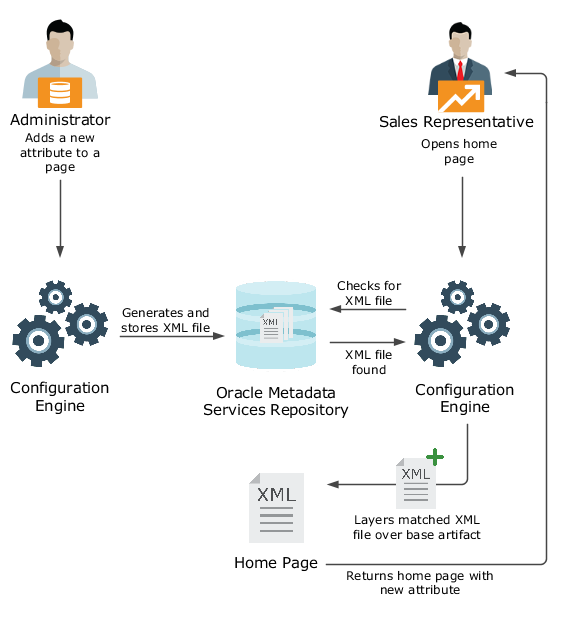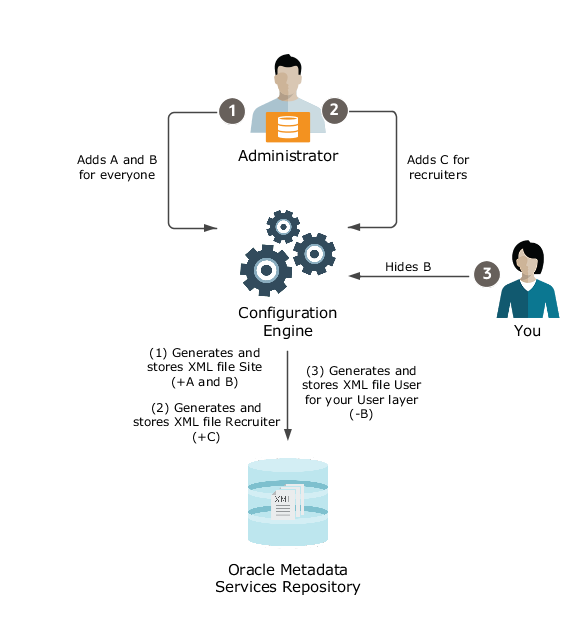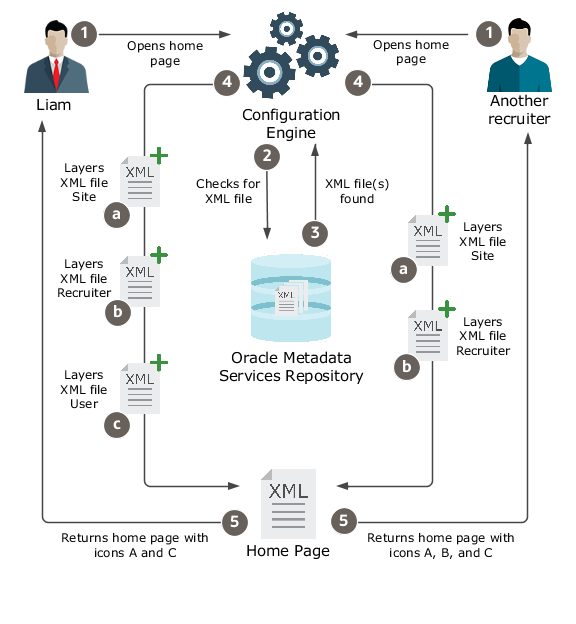Examples of How the Appropriate Configurations and Personalizations are Applied
Here are a couple of scenarios that show you what happens behind the scenes with context layers so that the appropriate configurations and personalizations are available to the appropriate users.
An Administrator Configures a Page for Sales Representatives
Let's say you're an administrator who wants to remove the Export button from the home page, but you want to remove it only for sales representatives. You select the Job Role context layer with the value Sales Representative, and then remove the button.
This is what happens after you make this change:
-
The configuration engine in Oracle Metadata Services generates an XML file and then stores it in the Oracle Metadata Services repository. So the original file for the page remains untouched.
-
When a sales representative opens the home page, the configuration engine checks the repository for XML files that satisfy these two conditions:
-
Does the file match the requested artifact, in this case, the home page?
-
Does the file match the active context, in this case, the Sales Representative job role?
-
-
The configuration engine also looks for any XML files with personalizations that this specific sales representative made. But for now, let's assume our sales representative hasn't personalized anything.
-
After the configuration engine finds an XML file that satisfies both conditions, that XML file is then layered over the base artifact, the original Sales page. In this scenario, the XML file removes the Export button from your sales representative's page.
Here's an image that shows you how this configuration is done.

A Recruiter Personalizes a Page
Let's say you added three new work area icons A, B, and C to the home page. You added icons A and B at the Site layer for all users and icon C at the Job Role layer just for recruiters. But Liam, who's a recruiter, doesn't use icon B all that much. He can personalize his home page to show only icons A and C. When Liam does this, an XML file is generated for Liam's user layer with this change.
The next time Liam opens his home page, the configuration engine retrieves three XML files:
-
The file for the changes you made at the Site layer
-
The file for the changes you made at the Job Role layer
-
The file for the personalization Liam made
The file for the context with the lowest layer (Site) is applied first, and the file for the context with the highest layer (User) is applied last. In this scenario, this is what happens when each file is applied.
-
The Site layer adds icons A and B to the home page for everyone.
-
The Job Role layer adds icon C.
-
The User layer removes B from the home page because Liam chose to hide it.
When a different recruiter opens the home page, only the XML files for the Site and Job Role layers are applied. This user sees icons A, B, and C.
Here are two diagrams that show you how this personalization flow works. In the first image, you, the administrator, add icons A and B to the home page at the Site layer and icon C at the Job Role layer for recruiters. The image also shows Liam hiding B.

The next image shows what happens when Liam and another recruiter open the home page.
